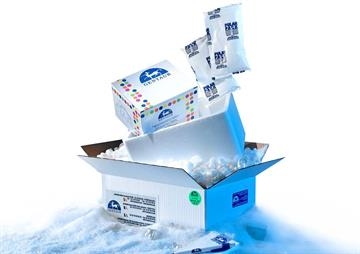Recombinant Human GRO-beta/MIP-2 (CXCL2)

Recombinant Human GRO-beta/MIP-2 (CXCL2)
0.01 €Ask for quotation
On request
quantity
product details
Catalog number: 567 - 7-01864
Product Category: Business & Industrial > Science & Laboratory
CHI ScientificGentaur
Size: 2µg
Related Products
90150-A
Human GRO-beta (CXCL2)
Recombinant GRO-beta is a disulfide-linked homodimeric protein consisting of 74 amino acid residues, and migrates as an approximately 8 kDa protein under non-reducing and reducing conditions in SDS-PAGE. Optimized DNA sequence encoding human GRO-beta (CXCL2) mature chain was expressed in E. coli.
345 €
90150-B
Human GRO-beta (CXCL2)
Recombinant GRO-beta is a disulfide-linked homodimeric protein consisting of 74 amino acid residues, and migrates as an approximately 8 kDa protein under non-reducing and reducing conditions in SDS-PAGE. Optimized DNA sequence encoding human GRO-beta (CXCL2) mature chain was expressed in E. coli.
457.5 €
100-032S
Human GRO-beta (CXCL2) Recombinant Protein
Human GROß is a member of the C-X-C family of chemokines and promotes neutrophil and basophil chemotaxis and degranulation. GROß like GROa specifically inhibits growth factor-stimulated proliferation of capillary endothelial cells in a dose-dependent manner. Human GROß is a 7.9 kDa protein containing 73 amino acid residues.
438.6 €
CD01698-10ug
Recombinant Human GRO- Beta/CXCL2 protein
CXCL2, also named GRO-β, is belonging to the CXC chemokine family. It is encoded by the gene CXCL2 in humans. CXCL2/GROβ shares 90 % amino acid sequence with CXCL1/GRO-α. All three human GROs (GRO-α, GRO-β, GRO-γ) are members of the intercrine alpha (chemokine C-X-C) subfamily of chemokine. This chemokine is secreted by monocytes and macrophages. The functional receptor for CXCL2 has been identified as CXCR2. CXCL2 is chemotactic for polymorphonuclear leukocytes and hematopoietic stem cells. Similar to other GRO proteins, CXCL2 is potent neutrophil attractants and activators. In addition, it is also active toward basophils.
628.1 €
CD01698-2ug
Recombinant Human GRO- Beta/CXCL2 protein
CXCL2, also named GRO-β, is belonging to the CXC chemokine family. It is encoded by the gene CXCL2 in humans. CXCL2/GROβ shares 90 % amino acid sequence with CXCL1/GRO-α. All three human GROs (GRO-α, GRO-β, GRO-γ) are members of the intercrine alpha (chemokine C-X-C) subfamily of chemokine. This chemokine is secreted by monocytes and macrophages. The functional receptor for CXCL2 has been identified as CXCR2. CXCL2 is chemotactic for polymorphonuclear leukocytes and hematopoietic stem cells. Similar to other GRO proteins, CXCL2 is potent neutrophil attractants and activators. In addition, it is also active toward basophils.









